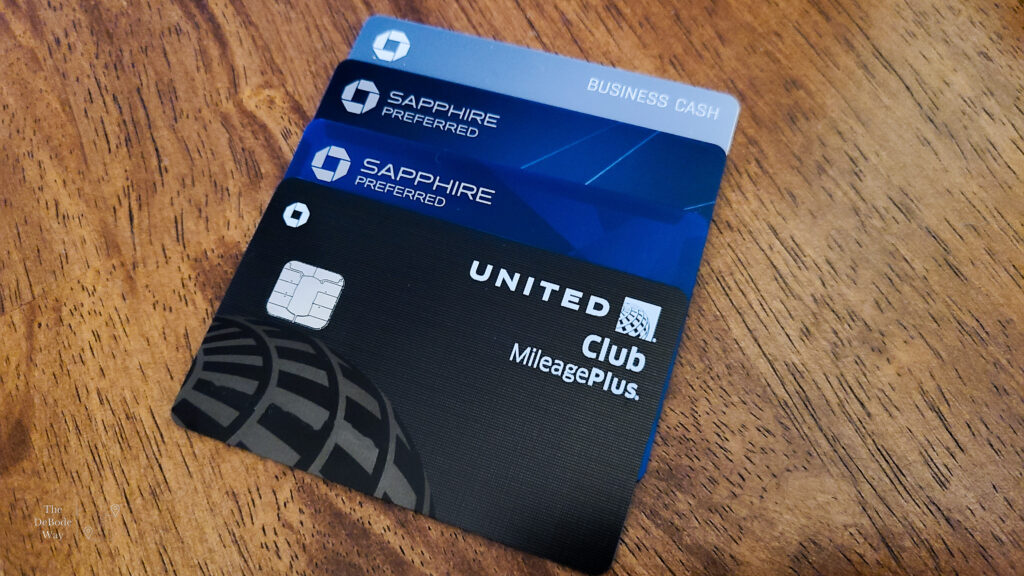The 5/24 rule – huh? Every now and again you stumble across a set of numbers that doesn’t immediately make sense. For example, if you’ve seen the popular Pirates of the Caribbean movie series, you’ll be familiar with the ‘9 pieces of Eight,’ which, at first thought, doesn’t make sense. How can you have nine pieces of something that only has eight pieces? But, as you dig a little deeper, things start to make more sense.
Case in point: at the time the Pirates movies are to have taken place (the mid-18th century, by some accounts), a piece of eight was an actual thing – it was another name for a Spanish dollar, a legal currency at the time. As you might guess, there were nine pirate lords, each of whom needed something to indicate their membership as a pirate lord. Initially the token was supposed to be actual money (i.e., a piece of eight), but as ATMs weren’t at every port, sometimes the pirate lords found themselves without any cash (me too, pirates, me too). Further complicating things, cell service wasn’t always great while on the open seas during the Golden Age of Piracy, and so apps like Venmo were unreliable. Instead, they ended up using a personally-selected item. Now you know.
Enough Trivia – What is this 5/24 Rule?
Alright fine, though helpful for small talk at parties, pirate history isn’t what we’re here to discuss. But we are here to discuss a different set of numbers that also might not make immediate sense: Chase’s 5/24 rule. And no, this isn’t a reference to May 24th. If you’re an avid reader of The DeBode Way (you are, right? Of course you are!) you’ll know that in our last post we talked about ways to maximize your travel points by earning Sign Up Bonuses (SUBs) from different travel-focused credit cards, though doing so responsibly. That’s a great way to rack up a considerable number of points, but it pays to be careful when taking this approach, as having multiple cards can make things complicated and expensive, especially if they have annual fees tied to them. Beyond this, some banks pay close attention to how many cards you open and when; as you increase the number of cards you open, the harder it gets to be approved for new cards. Perhaps the most well known of these rules is the 5/24 rule from JP Morgan Chase (Chase).

Still…what is it?
Here’s the deal: Chase has lots of travel-focused credit cards that are held in a high regard, like our Chase Sapphire Preferred card that we use for most of our regular expenses. Many of those have valuable benefits tied to them, as we’ve discussed before (our United Club Infinite Card is also issued by Chase, for example). Because of this, folks consider having multiple Chase cards, especially if they all earn Ultimate Rewards points which you can combine into a single account to redeem for travel. We do this, and it works well for us. However, the Chase 5/24 rule means that Chase won’t approve you for a new card if you’ve opened 5 or more credit cards in the last 24 months.
There are a few things to keep in mind about the 5/24 rule. First, this rule applies to credit cards issued from any bank, not just Chase. For example, let’s say in the span of 24 months you open two Chase cards, two American Express cards, and one card from Citibank. This adds up to 5 cards in the last 24 months, so if you then find another card from Chase that looks attractive, you’re likely to be denied because you’ve violated the 5/24 rule even though most of those cards didn’t come from Chase. Make sense?
Second, this rule doesn’t apply to most business credit cards. Exceptions to this are business cards from Discover and small business cards from Capital One (thanks to our friends at 10xTravel for the head’s up about this), as those will count toward your 5/24 count. However, most other business cards, lines of credit, loans, and the like shouldn’t count against this rule.
But Chase is only one bank, what about all the others?
It’s also important to note that this rule is for Chase’s cards (though Chase itself hasn’t really confirmed this). Other banks probably have similar rules, but they might be a little different for each of the major banks. Also, as far as we’re aware, having an excellent credit score won’t get you around this rule, though that’ll certainly factor in when they (or any bank) evaluate your application.
In the end, having multiple cards – and using them responsibly – can be a great way to accelerate the number of points you can earn and convert into vacations (or whatever else you want to spend your points on). We do this and so do lots of other folks. At the same time, make sure you’re paying attention to how many cards you’ve opened in the last 2 years, especially if you tend to gravitate more to Chase’s cards. Because of this rule, it’s also a good idea to make sure the cards you’re opening first are the ones most valuable for your spending and travel habits. It would be a shame to miss out on a great offer because you have too many lower-tier cards with relatively fewer benefits.
A Friendly Reminder:
As always, we advocate for the responsible use of these cards in conjunction with your regular spending habits. Never open cards you don’t need, won’t use, or can’t afford as that tends not to end well. Also, as attractive as those SUBs can be, it’s critically important we make those fit into our regular and/or planned spending habits. For example, it’s relatively easy for us to shift our regular spending from one card to another to quickly earn a SUB. Or, if we know of a large expense coming up, we’ll start looking for a potential new card with an attractive SUB. But again, all of that is planned and accounted for in our budget ahead of time.
Whatever your approach, be smart with your money as even the best of SUBs isn’t worth overextending yourself.
What’s your favorite credit card? What do you like about it? Let us know!
Happy traveling!




